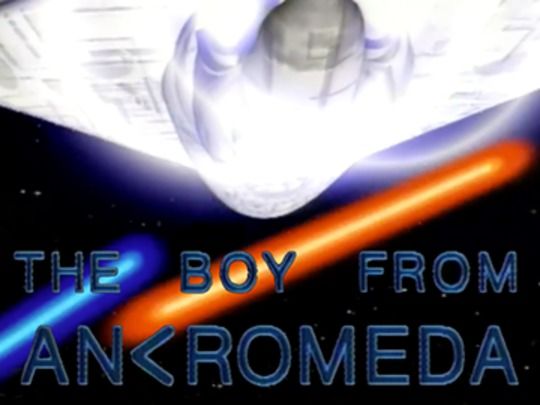Musical show filmed in Christchurch with Ray Columbus and the Invaders.
The following February the newly-reconstituted Ray Columbus and The Invaders began fronting four episodes of Club Columbus, which was syndicated throughout the country. At that time, Ray Columbus was 19 years-of-age. - From rockhappenz.com
World Of Illusion Behind TV Studio
Press, Volume CI, Issue 29807, 27 April 1962, Page 11
Show business thrives on illusions, and this is particularly so in the medium of television, where the camera can be made to tell most convenient lies.
In a converted garage behind Channel 3’s studio in Gloucester street there is an artists’ studio devoted entirely to this world of illusion. Here a pot of paint, a sheet of cardboard, glue, tacks and waste scraps are transformed to suit the whims of producers.
The master of illusion is Mr C. Leeming, a commercial artist who had a good training for this work by designing and making sets for the Timaru Operatic Society. He is helped by another man from Timaru. Mr S Newman.
They worked together at the time of Timaru’s centennial on the Pioneer Princess float tor the procession.
Mr Leeming finds now that he has to be a Jack of all trades. As well as designing the sets and painting them, he has to build them, paint portraits as well as landscapes, paint captions and credits, and bend al] sorts of materials to his purposes.
The sets he was working on yesterday are for Club Columbus, a musical programme to be shown this evening. The swing doors to the club are only about 18in wide, but when the camera moves up to them and trundles through them they will seem real and full-scale. A coffee urn for the show is made of the most unlikely materials. Its base is a turntable and its sides are corrugated cardboard, with a kitchen tap poked through them.
For the channel’s Christmas play the two men built a suit of Roman armour by moulding a sticky substance around the man who was to wear it. then cutting it off him. shirt and all. The set for the play took up the entire studio and the players had to make their exits by a door into the cold night air
They have found, too, that there are special problems which have to be mastered in the television medium. One of them is that whatever colours are used in a set, they all become some shade of grey on the screen.
Mr Leeming tested different colours on the camera to find their responses on the grey scale. I like to use colours instead of greys because of their effect on the performers,
he said. If a lively show was set against grey scenery the performers wouldn't feel very lively.
He said he was looking ahead to colour television, and would continue to use colour in his sets to avoid the problem of having to adapt again when colour television was introduced here.
He also has to co-operate closely with the studio technicians to ensure that his sets are suited to the lighting to. be used for a particular programme.
I can't use a stark white paint,
he said, because that would burn a spot on the camera tube. Sharp contrasts are not practicable either, because they make the picture blur. Another problem is the use of colours that will not merge with the colour of flesh.
Mr Leeming has found that his work in the scenery department has grown enormously as the work of the television station has grown He expects scenery to play an even larger part as the proportion of locally produced programmes increases.


Comments powered by CComment